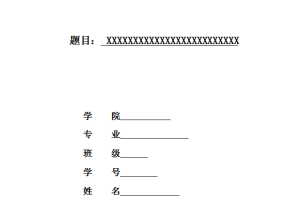风险投资中企业估值实证研究
摘要
风险投资中企业价值评估是企业进行风险资本运作的基础,企业价值评估已经成为市场经济中不可或缺的一项资产评估业务。企业的资产评估只是对企业所拥有的资产进行静态的评估, 而企业的价值评估则是对企业的综合实力进行的整体性、动态的评估。财务报表中显示的利润以及资产的价值只是一个起点, 它需要加入一些无形的因素, 如企业的潜在发展能力、智力成本等才能体现公司的综合价值。如何确定企业的价值, 评估方法是核心, 它将直接影响到企业价值评估的结果及市场交易的实施。价值评估是金融研究领域的核心问题之一,本文就企业估值的概念及意义做了详尽的描述,并对几种常用的企业估值方法做了详细论述。然后对目标公司的价值评价模型及风险投资行业的特点风险投资中对做了详细论述。最后,列举了一个关于风险投资的实际案,并对目标公司运用文中介绍的有关企业估值方法对其进行了估值,最后将这几种估值方法做了分析和比较。提出了在选择方法时要根据产品差异,发展阶段差异、规模差异等,进行适当的调整。
[关键词] 估值;风险投资;预测;价值评估
Abstract
The risk of investment in enterprise value assessment is the foundation of venture capital operation, the enterprise value evaluation has become market economy an indispensable asset assessment of the business. Assessment of enterprise assets just to the enterprise assets are static assessment, and to assess the value of the business is that of the comprehensive strength of the enterprise are integrated, dynamic assessment. Financial statements showing profits and assets value is only a starting point, it needs to add some intangible factors, such as enterprise’s potential development ability, intelligence cost can reflect the company’s comprehensive value. How to determine the enterprise value, evaluation method is the core, it will directly affect the enterprise value assessment results and market trading executive. Value assessment is the core research area of finance, this paper describes the concept and significance of enterprise valuation, and discusses in detail several common enterprise valuation method. After the introduction of the risk investment industry and the basic concept of the investment process, discusses the risk investment industry and the characteristics of risk investment in the target company’s value evaluation model. Finally, in an actual risk investment case, this paper introduces the application of business valuation methods of target company is estimated, and the several valuation methods were compared and analyzed.
[Key words ] valuation; risk investment; prediction; value assessment
目 录





